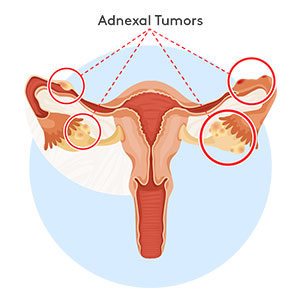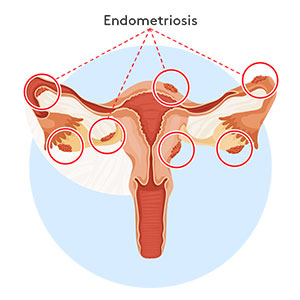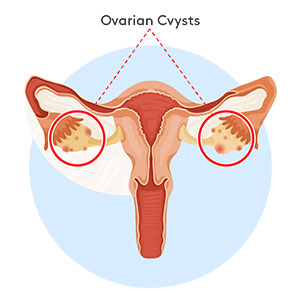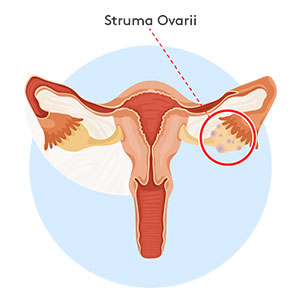Gynecological Problems and Disorders
Almost every woman will suffer from a gynecological problem at some point in her life. It may be painful, and the pain may be brushed off as normal because it may be experienced during the menstrual cycle. The pain usually occurs in the pelvic region, so it can also be mistaken for other disorders such as gastrointestinal (e.g., constipation, high perirectal abscess), urinary (interstitial cystitis, calculi), musculoskeletal (abdominal muscle strains) and psychogenic (effects of previous physical, psychologic or sexual abuse) disorders.
But the pain can be distinguished from these disorders according to the duration and frequency of pain. Different gynecology diseases can produce the same symptoms, namely:
- Irregular or heavy bleeding
- Spotting
- Post-coital bleeding (PCB)
- Pelvic pain
- Back pain
Your pelvic pain may indicate a more serious condition. Baptist Health System is dedicated to providing you with a supportive and comfortable environment with our compassionate and experienced gynecologists as well as advanced technology to deliver the most innovative diagnostic and treatment procedures for your gynecological problems.
What Is a Gynecological Disorder?
A gynecological disorder is a condition that affects the normal function of female reproductive organs, including the breasts and organs in the abdominal and pelvic area, namely the womb (uterus), ovaries, fallopian tubes, vagina and vulva. At Baptist Health System, we provide a wide range of services to treat gynecological problems as well as prevention and screening for women’s gynecologic health.
Gynecological Disorders
 |  |  |
 |  |  |
 |  |  |
We treat various types of gynecological disorders and diseases across San Antonio, including:
- Adnexal tumors
Adnexal tumors, also known as adnexal masses, are growths near the uterus. These masses form in the ovaries, fallopian tubes and can also develop in the connective tissues. There are many types of adnexal tumors that are categorized according to their location (ovarian or non-ovarian) and if they’re cancerous or not (benign or malignant). Symptoms rarely occur, but they may include:- Pain in the pelvic region
- Irregular periods in women who are experiencing pre-menopause
- Bleeding at the site of the mass
- Difficulty with urination
- Frequent urination
- Constipation
- Gastrointestinal disorders
- Bartholin’s cyst
The Bartholin’s glands are located between the vagina and the vulva. They are responsible for producing liquid to provide lubrication during sexual intercourse. A symptom of Bartholin’s cyst may include a slight lump on the labia. Bartholin’s cysts are lumps that usually do not cause pain when they are small, but if the cyst grows, it may cause discomfort and pain in the vulva, especially during sexual intercourse, sitting or walking. - Cervical dysplasia
Cervical dysplasia is a gynecological disorder when the healthy cells in the cervix, which is located on the lower part of the uterus and leads to the vagina, undergo abnormal changes caused by a sexually transmitted virus called human papillomavirus (HPV). These abnormal cells are often not cancerous but can be cancerous if not detected and treated early. You can reduce the risk of having cervical dysplasia through the HPV vaccine. Symptoms are not common for those diagnosed with cervical dysplasia, but sometimes abnormal bleeding may occur. - Endometriosis
Endometriosis is a condition that is caused by the tissue that should line the uterus, known as endometrium, growing outside of the uterus. Most common growths occur in the ovaries, behind the uterus, in the bowels or the bladder. The tissue can also grow in other parts of the body, but it is far less common. Endometriosis causes abdominal, lower back or pelvic pain, infertility and heavy periods. - Incompetent cervix
An incompetent cervix is when there is an early dilatation of the cervix within three months of pregnancy without pain or contractions. The cause of an incompetent cervix is often unknown, but it can be caused by a congenital weakness of the cervix. Some other conditions can increase your risk of developing an incompetent cervix, including exposure to diethylstilbestrol (DES), underlying connective tissue disorder, prior second-trimester termination of pregnancy and history of cervical procedures (e.g., loop electrical excision procedure, cone biopsy). Symptoms may include pelvic pain. - Ovarian cysts
Ovaries are located in the lower abdomen on both sides of the uterus. Many women will develop a cyst in their ovary at least once in their lifetime. Most cysts are painless and do not exhibit symptoms. There are various types of cysts. The most common are:- Follicle cyst: occurs when a follicle, where the egg grows, doesn’t break open. The fluid inside the follicle causes a cyst to form.
- Corpus luteum cyst: occurs when the follicle doesn’t dissolve after releasing an egg and the opening seals close. The liquid may accumulate inside the follicle, and it causes cysts to form.
- Abdominal bloating or swelling
- Painful bowel movements
- Pelvic pain before or during the menstrual cycle
- Painful intercourse
- Pain in the lower back or thighs
- Breast tenderness
- Nausea and vomiting
- Struma ovarii
Struma ovarii is a condition when a tumor is at least 50% comprised of thyroid tissues on an ovary. Most of these tumors are benign and usually appear after age 50. Symptoms may include one-sided pelvic pain and may also include symptoms of hyperthyroidism, absence of thyroid gland enlargement, an elevated thyroglobulin level and a low thyroid radioiodine uptake. - Uterine fibroids
Uterine fibroids, also called leiomyomas or myomas, are benign growths that develop from the muscle tissue of the uterus. They may be inside, on the outer part, within the walls of the uterus or attached to the uterus in a stem-like structure. These growths may not grow for a long time then grow rapidly or grow slowly over the years. Symptoms may include:- Changes in menstruation
- Pain (abdominal, lower back or pain during sexual intercourse)
- Pressure (difficulty or an increased frequency in urination, difficult bowel movements or abdominal cramps)
- Enlarged abdomen
- Pelvic organ prolapse
Pelvic organ prolapse is when the muscles supporting organs in the pelvic region become weakened or loose. The weakened muscles cause the organs to drop or press to the vagina. Symptoms may make women feel embarrassed, but the first step is disclosing your symptoms to your gynecologist. Here are the following symptoms watch for:- Seeing or feeling a bulge or "something coming out" of the vagina
- A feeling of pressure, discomfort, aching or fullness in the pelvis
- Pelvic pressure that gets worse with standing or coughing or as the day goes on
- Leaking urine (incontinence) or problems having a bowel movement
- Problems inserting tampons
- Other gynecological problems treated:
- Cervical and uterine cancer
- Menorrhagia or excessive bleeding
- Preparation for and management of menopausal symptoms
When to See a Gynecologist
Most of the gynecological issues mentioned exhibit no symptoms unless they are already in an advanced stage, so you may not know you have a cyst, tumor or mass unless you undergo a routine examination by a gynecologist. Before diagnosis, our gynecologists will assess your gynecological history first, then proceed with diagnostic procedures. Please be sure to stay on top of your health with consistent appointments with a gynecologist.
An annual visit to the gynecologist may include the following:
- Screening, evaluation and advice
- Immunizations
- Physical exams including vital signs, body mass index and assessing overall health
- Pelvic examination and breast examination
- Mammography
- Colonoscopy
When your gynecologist sees something, they may recommend some diagnostic tests such as:
- Pap smear test
- Ultrasound
- Colposcopy
- Biopsy
- Hysteroscopy
Click here for more information on Gynecology Treatments and Testing.

